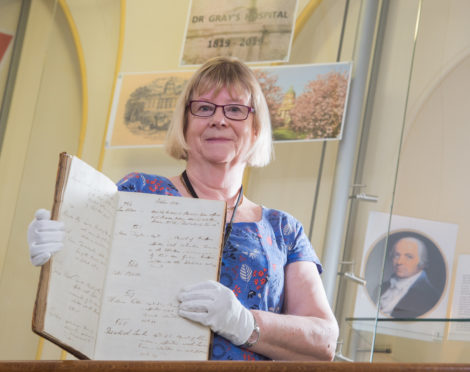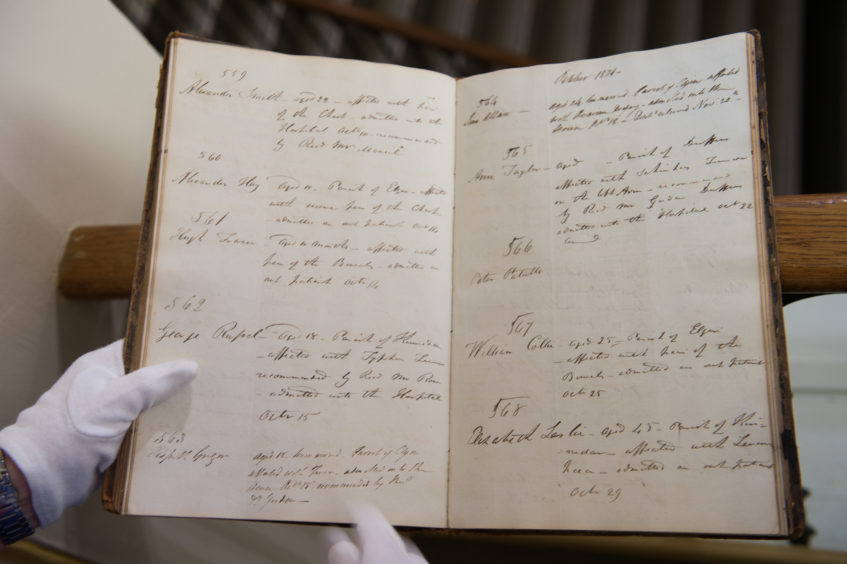Nervous bowels, tremors and indigestion were just some of the ailments suffered by the very first patients at a beloved Moray hospital.
Dr Gray’s Hospital in Elgin marks its 200th anniversary this year, having opened in 1819, with just seven members of staff.
As part of the celebrations, the original admissions book has gone on display as part of an exhibition dedicated to the unit at Elgin Museum.
It details the first patients’ maladies, in classic handwritten script, alongside their names, those of their doctors and, in some cases those of the church ministers who first referred them to the hospital.
The incredibly rich document also records the length of their stay.
The insight into medicine in the early 19th Century has now taken its place alongside historic medical equipment and photographs of the hospital from its early days.
Museum volunteer Janice Mackenzie said: “We’re very lucky that NHS Grampian still had it.
“Many of these types of documents inadvertently get mislaid or damaged, especially over the course of 200 years.
“The hospital means so much to so many people, not just in Elgin but in other towns and villages. I’ve seen it evolve so much over the last 40 years alone.
“It’s really interesting to look back and see how it was working when it first opened.”
During its first year of operation, Dr Gray’s provided treatment for 204 patients, from just 30 beds.
Last year the hospital, which now has about 550 staff and nearly 200 beds, is estimated to have provided care to 20,000 people.
The unit was named after Elgin-born Alexander Gray, who worked in Asia for more than 20 years for the East India Company.
Before his death in 1807, the surgeon bequeathed £20,000 – worth about £1.8 million in today’s money – for the construction of hospital in his hometown.
Dr Gray’s heirs contested the will for seven years and the legal proceedings delayed progress on construction until the Court of Chancery declared the will should stand in 1814.
James Gillespie Graham, who was famed for his Gothic style, designed the hospital, which welcomed its first patients on January 1, 1819.
The admissions book, which has been loaned to Elgin Museum from NHS Grampian’s archives, will be on display at the attraction until October.

